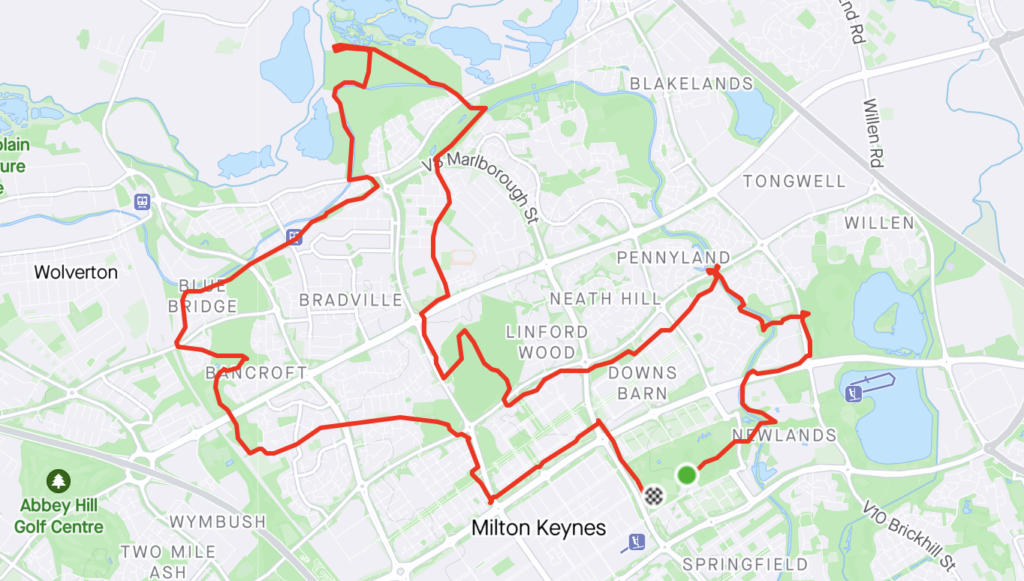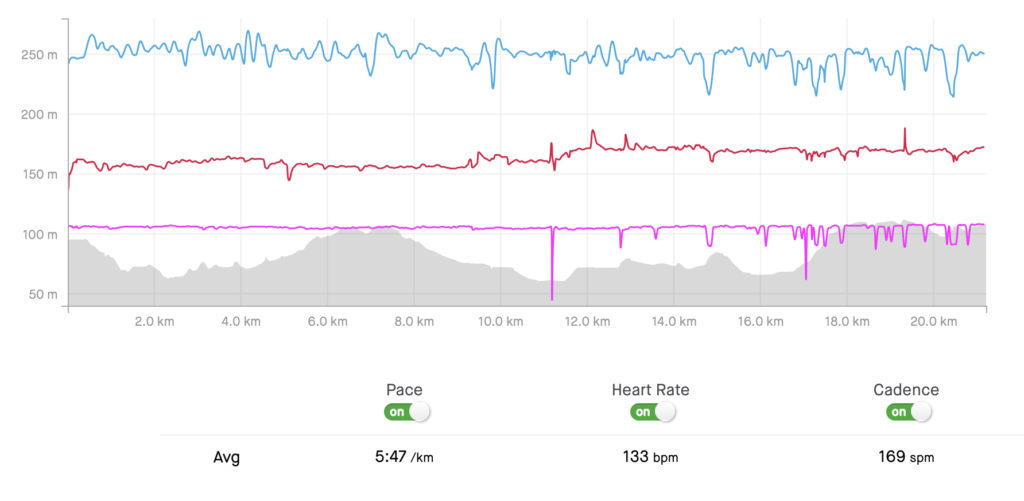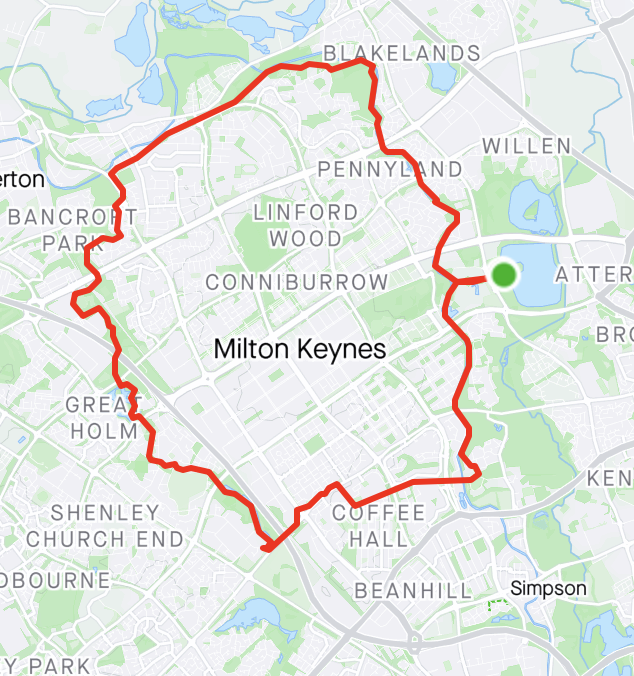A question I get asked a lot is “why do I struggle with the half marathon”. There will be numerous answers to this, depending on individual circumstances, so I am answering the question using a specific example that will resonate with a lot of you, and give you some areas to look at in your own training.
Help! I ran a half marathon but fell apart at mile 10. This always seems to happen for some reason…
Why do I struggle in a half marathon overview
To better understand what happened, and what we can do to overcome the problem, we are going to look at the following areas:
- race analysis
- training history
- specificity of training
- running plan
What happened on the day?

What are we looking for?
The map shows:
That the course was challenging, with very few flat sections, a long climb in the first third, a sharper climb followed by a false flat in the final 5km, and lots of twists and turns making it trickier to maintain a steady pace
The graph shows:
A gradual decline in pace.
A steady heart rate in first half, matched by even cadence
A subtle change in cadence and heart rate on the flat section around 9km (6m)
A more obvious change in all measures at the half way mark.
That the ‘wheels fell off’ much earlier than mile 10!
8 of the first 9km (admittedly including a downhill start) were faster paced than a recent 5K (parkrun) PB. As you can see thatchers the first big climb too. This was far quicker than all but 2 training runs in the 18 weeks of training
TIP – know your average pace, and take into account the terrain – so expect to be a few seconds faster on downhill sections


Training history
The graph below shows Michael’s weekly mileages over the past 12 months. What we can see is that there had been no recent ‘bigger weeks during the main training block, and no progression in training mileage until August, and a huge hike in mileage the week before race week.
What stands out?
The huge increase in mileage just before the race
The longest runs got a lot faster
a race 2 weeks out from the half


Specificity - training for the event
Training with specific focus on an event will leave you better prepared. This is where a bit of homework comes in handy.
In this instance we do have long runs of varying lengths each week. These will be the key runs so it is great to see these. There is a faster run most weeks, most of which were still slower than race pace though.
What we don’t see is any hill training or faster intervals, both of which are specific to a half marathon.
Running Plan? What running plan?!
As it turns out there had been no running plan
Having a plan gives you structure. Racing two weeks before another race is not ideal, but can be taken into consideration when planning.
You may not always have easy access to varied pace running groups within your club, so going out alone, or with a mate, can be a good option. That was you can work on some of the key skills – running uphill, running fast, recovering whilst still running downhill. In other words, interval training.
The other way to improve in the ability to run up hills is to include some ‘cross-training’ into the week. IN this case a short leg strength session twice a week (20-30 minutes) would really help.
So What Is The Answer?
Well, If you are struggling in a half marathon the first thing we need to do is ensure you are following a plan that works for you.
3 elements: Long runs, short runs, faster runs. If you can add a strength session in, or yoga, all the better.
The plan doesn’t show it, but this is a perfect time to sign up for the running ability course 😉
The long runs need to be progressive, but also include easier weeks for recovery. That recovery is where your body physically rebuilds itself. This is why we also have a taper, so much easier running in the 2-3 weeks before a race.
I have also kept the total distance covered each week to levels not dissimilar to this years training, so as to not overload the body too much. The three longest runs are all well below half marathon distance, so the pace needs to be slow enough that by the end it feels like there is plenty more in the tank.
The biggest change is the addition of a more focussed workout – intervals.
When we look at the course profile we can see a long 2km climb at the 14km mark, so adding in some specific hill work will really help. the 400m intervals will also help by building a little more speed in the legs.
The trick to the hillwork is to find a reasonably long stretch of uphill or, better still, a loop that has little to no flat sections. A favourite of mine is the Tattenhoe Park hill loop segment. The majority of each interval wants to be uphill, but as we don’t live near mountains there will always been downhill elements on the longer 5 and 10 minute segments



Share this post: on Twitter on Facebook on Google+


